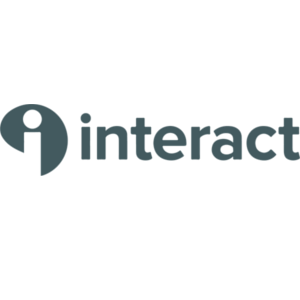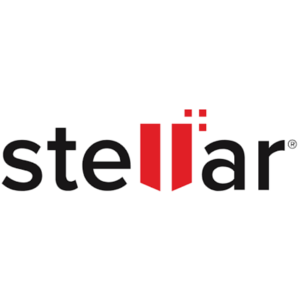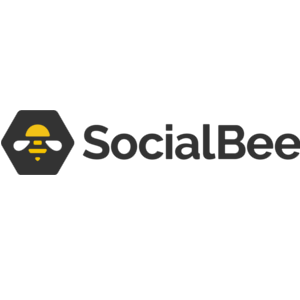Ecosia

What is Ecosia?
Founded in 2009, Ecosia is a German not-for-profit search engine. Its main claim to fame: every search query you make goes some way to planting a tree.
But, other than the obvious social impact, how is it different from its more famous competitors Google Search and Bing? Or, for that matter, Russia’s Yandex or China’s Baidu?
In this article, we delve deeper into Ecosia and what makes it such an interesting case in the tech and digital advertising landscape.
How does Ecosia work?
Ecosia’s search results are based on Bing, but it adds its own algorithms to sort through results and rank them as it sees fit. In that way, it’s immediately different from Google and Bing in that it doesn’t keep its own search index, nor does it run its own web crawler.
Take the example below. The query, “What is the most popular n-sync song?” returns similar top results on both search engines but Ecosia favoured eOnline’s result over Billboard.
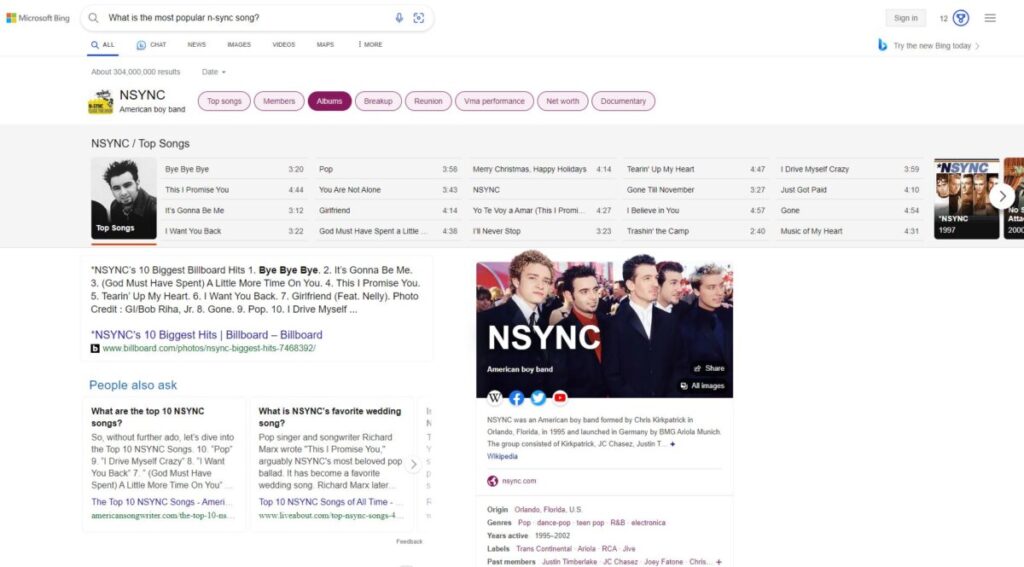
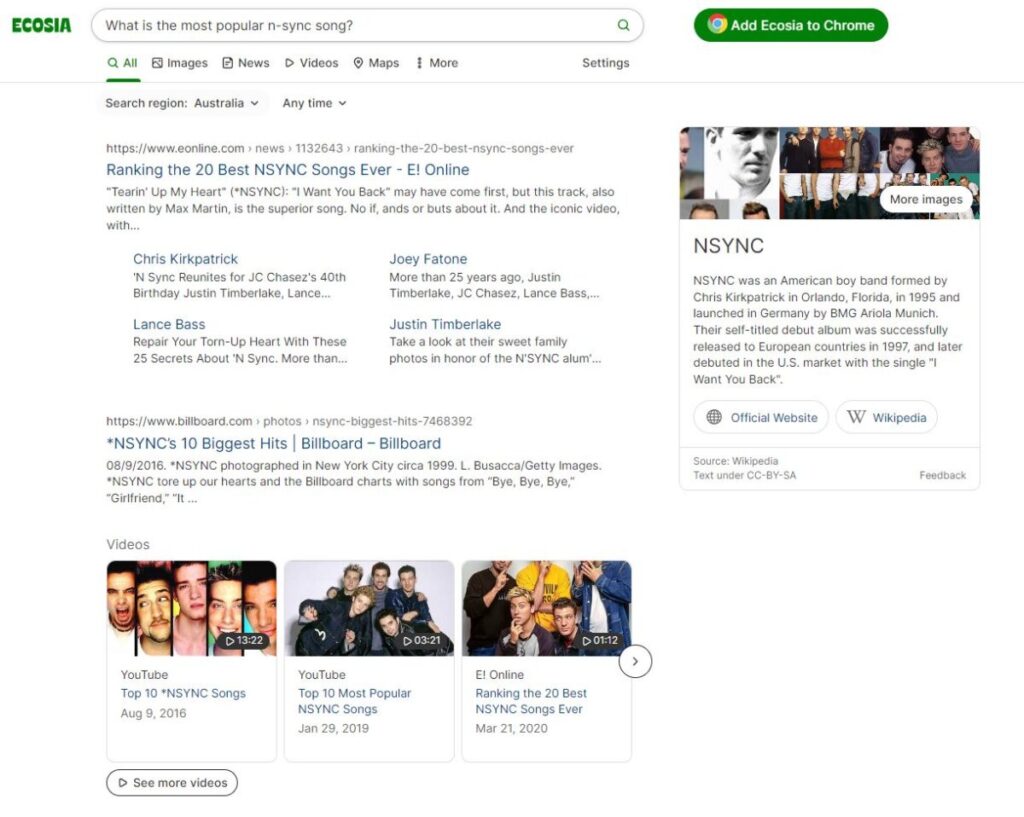
Something else that immediately stands out is that Bing displays “rich results” in a manner similar to Google’s search engine. In this case, it allows you to immediately locate and launch a particular song (powered by Bing’s own video results). By comparison, Ecosia’s search results page returned more standard hyperlinks, with less options to navigate to.
Does Ecosia have a Search Console?
Because it pulls its search results from Bing and doesn’t run its own crawler, Ecosia dispenses with having a Search Console. Therefore, webmasters looking to optimise their websites for Ecosia should focus on submitting their site through Bing Webmaster Tools.
How does Ecosia make money?
In short, through advertising. When you search through Ecosia, the top results presented to you might be sponsored by advertisers. Here, though, you’re not adding to Microsoft or Google’s coffers: if you click on a sponsored link, a significant percentage of that revenue will contribute directly to planting trees.
And how much revenue does Ecosia make?
In 2022 Ecosia generated approximately €30 million in revenue. By comparison, Google Search is reported to have generated $162 billion and Bing $11.5 billion. On the one hand, this shows just how dominant Google and Bing are (and the gap might increase with the advent of AI driven search, such as Bard and ChatGPT).
On the other hand, €30 million is a solid turnover. And that number will likely continue to increase as more people become aware of Ecosia.
Bear in mind that consumers are increasingly environmentally conscious in their choices. A search engine that invests its profits on the planet is likely to gain in popularity as the climate change discussion continues to take centre stage.
How much of Ecosia’s revenue goes to planting trees?
To better understand how Ecosia’s advertising revenue services the planet, head out to its website for monthly financial reports. For this article, we will take January 2023 as an example and break it down for you.
Total Revenue Generated in January 2023: €2,994,878
Breakdown:
| Trees | €776,137 |
| Reserves and green investments | €709,526 |
| Taxes and social security | €573,101 |
| Spreading the word | €125,468 |
| Operational costs | €810,646 |
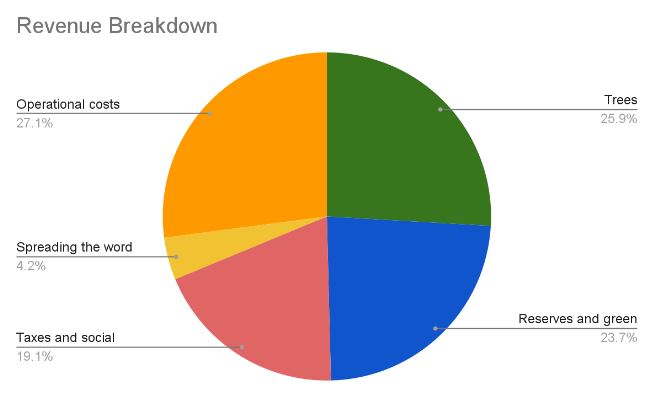
As you can see from the graph above, not all of Ecosia’s ad revenue goes to planting trees and that’s a good thing. The company’s financial breakdowns illustrate that not only is it supporting tree-planting initiatives right now, but that it is also making investments that will allow Ecosia to continue to do so for years to come. Here’s what each of the above categories mean:
- Trees: the amount of money transferred that month to tree-planting partners around the world
- Reserves and green investments: Ecosia describes this amount as being set aside for green investments, such as solar initiatives or regenerative agriculture. Examples of these investments can be found in its news section.
- Operational costs: these represent the basic costs of running a business, including personnel and equipment.
- Taxes and social security: despite being a not-for-profit, Ecosia still has to pay taxes (and quite a lot of them). Its statement mentions that it does not engage in any form of tax evasion, a soft dig at the many criticisms aimed at its more famous search engine competitor.
- Spreading the word: this relates to community engagement and advertising or, as Ecosia puts it, raising awareness to its platform. So that, ultimately, more trees can be planted.
Can Ecosia be trusted?
A company with this profile and financials almost sounds too good to be true. That said, all the data available suggests that Ecosia can be trusted, starting with its B-Corp Certification.
How does B-Corp Certification work?
For those of you unfamiliar with how B-Corp’s scoring works, companies must attain a score of at least 80 to qualify for certification. This score is derived from an assessment of the company across dozens of variables, including its mission, social/environmental impact, ethics, transparency among many others. Ecosia currently holds a score of 106.8. Most companies average 50.9 (thus rendering them unqualified for certification)
But it’s not just its B-Corp Certification that suggests Ecosia is worth your trust. It is incredibly transparent not only about its financials (as detailed above), but also about its operational practices. For example, its partnership with the privacy-centric browser Brave, its promise not to share or sell your data, and its commitment to make its operations carbon neutral. In this latter move, however, it’s behind Google, which has been carbon neutral since 20171.
What is Ecosia’s Climate Pledge Rating?
In October 2022, Ecosia announced that, in support of its mission to help consumers make more informed decisions for the climate, it was adding a new icon next to certain brand page results that would act as a “Climate Pledge Rating”.
Working with the Technical University Berlin, it began grading companies on a scale of A to F based on publicly available information on pledges made by companies and the likelihood of them becoming carbon net-neutral by 2030. Twitter, for example, has attained a D rating:
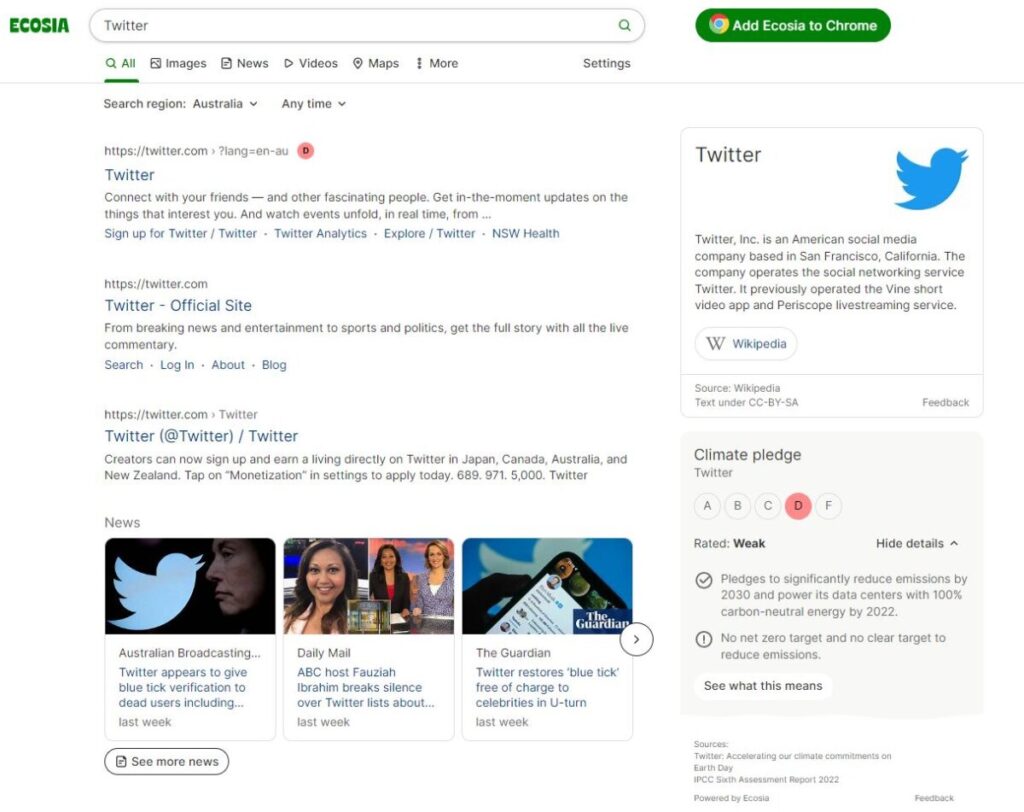
Clicking on “see what it means” reveals a lightbox where the grade is further clarified:
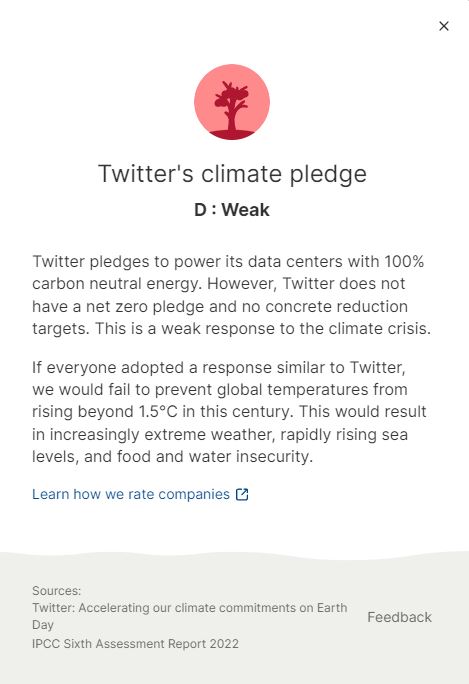
It’s important to note that Ecosia is not rating every company it lists on its search results. Instead, the company focuses on those companies that are highly queried. Ecosia further justified this methodology by pointing out that a 2017 study by the Carbon Disclosure Project highlighted that roughly 100 companies are accountable for 70% of emissions worldwide[2].
This is not the first time initiative of its kind for Ecosia. Back in 2019 it announced that it was launching two icons in the form of the “green leaf” (for companies doing well in their efforts to combat climate change) and the “coal mine” (for companies that have a negative impact).
What’s holding Ecosia back?
Well, for starters, it’s up against Google, one of the most sophisticated technology companies in the world. And while Ecosia employs 130 people, Google employs 300,000+. It’s a David against Goliath story, except here there’s another, smaller, Goliath in the mix, called Bing, run by yet another tech behemoth called Microsoft. That’s a tough battle to win.
Another potential limitation is its dependence on Bing. This dependence has several implications:
- Bing could, at some point pull the plug on partnering with Ecosia
- Ecosia’s search results are only as good as Bing’s results… and Bing’s results are not usually as good as Google’s.
This last point might morph into a different issue as Bing embraces a more AI-powered search experience in the form of Chat mode. Presumably, that interface will not be available for users searching through Ecosia.
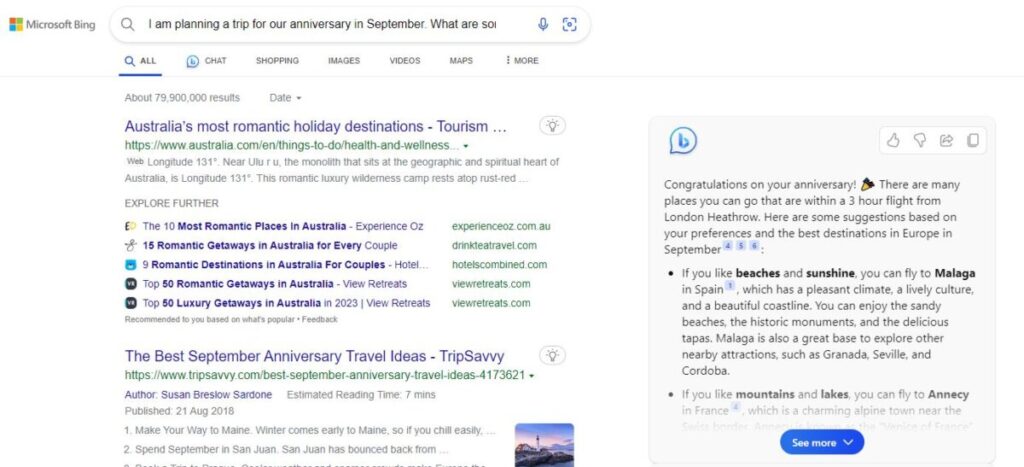
Keeping up with Ecosia’s Social Impact
Ecosia doesn’t have a newsletter but you can follow it on most social media platforms, including LinkedIn, Twitter and Facebook. Its blog is regularly updated with what it’s up to (and is usually worth a read).
Sources and additional info
- [1] For more on Google’s environmental impact, you can read their Google 2022 Environmental Report as well as their plan for becoming operating on carbon-free energy 24/7 by 2030
- [2] CDP: https://www.cdp.net/en/articles/media/new-report-shows-just-100-companies-are-source-of-over-70-of-emissions?
